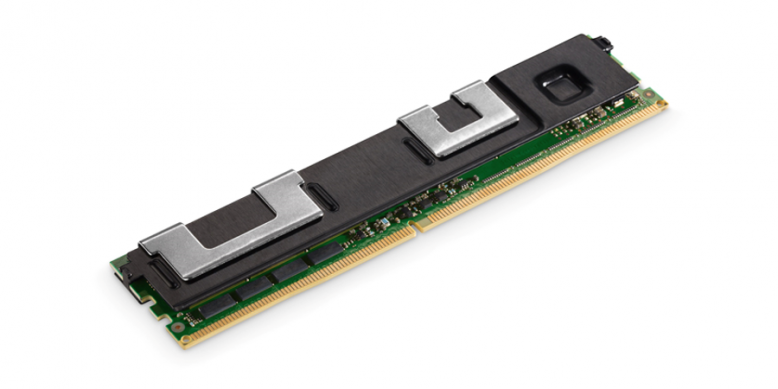STAC Reports: Intel persistent memory with kdb+ on Lenovo servers

New form of memory shows numerous large speedups over 3D NAND SSD
2 April 2019
Today Intel announced the availability of Intel Optane DC Persistent Memory. This product, code named Apache Pass, is 3D XPoint memory that fits in DIMM slots and uses the memory bus instead of the PCIe bus for communication with CPUs. At the same time, Intel launched the 2nd Generation Intel Scalable Xeon processors, code named Cascade Lake, and Lenovo announced upgrades to its ThinkSystem server portfolio to include both Intel innovations.
STAC recently used STAC-M3 benchmarks to test the impact of this new form of memory on time series analysis. STAC-M3 is the set of industry standard benchmarks for database software/hardware stacks that manage large time series of market data ("tick data"). We conducted two A/B tests of Optane persistent memory used as storage versus the latest Intel 3D NAND solid state drives, all using the kdb+ 3.6 database management system from Kx along with Intel Xeon Platinum 8280L (Cascade Lake) processors @ 2.7 GHz.
The first case was a Lenovo ThinkSystem SR650 with 2 x Platinum 8280L processors and 6TB of Optane persistent memory. We tested this system using the baseline suite of STAC-M3 (Antuco) when the entire database resided in persistent memory, and compared the results to those of the same system when the database resided completely in 3D NAND SSDs.
The second case was a Lenovo ThinkSystem SR950 server with 4 x Platinum 8280L processors and 12TB of Optane persistent memory. In this case we used both the baseline STAC-M3 suite (Antuco) and the scaling suite (Kanaga). We compared the results when most of the database resided in persistent memory (with a little in 3D NAND) to those when the database was entirely in 3D NAND.
The STAC Reports and supporting materials are available at the following links:- 2-socket system: a) database all in SSD versus b) database all in persistent memory
- 4-socket system: a) database all in SSD versus b) database nearly all in persistent memory
Highlights of the comparisons:
- The 2-socket solution was faster in 16 of 17 baseline (STAC-M3 Antuco) benchmarks when using persistent memory instead of 3D NAND SSD
- Intervalized statistics were accelerated by 9.5x for a single user, by 7x for 10 concurrent users, and by 3.5x for 50 concurrent users
- Market snapshots were accelerated by 4.1x
- Theoretical P&L was accelerated by 3.9x
- In all, 11 of the benchmarks were accelerated by more than 2x
- The 4-socket solution was faster in 8 of 9 benchmarks in the scaling suite (STAC-M3 Kanaga) when using persistent memory instead of 3D NAND SSD*
- It was faster in all 8 of the benchmarks for which data resided completely in persistent memory
- Market snapshots were accelerated 3.7x in Year 2
- In all, 6 of the 9 benchmarks were accelerated by more than 2x
Beyond these A/B comparisons, we found:
- Compared to all publicly disclosed STAC-M3 Antuco results for 2-socket systems running kdb+, this solution set new records in 11 of 17 mean response-time benchmarks.
- Compared to all publicly disclosed STAC-M3 Antuco results for 4-socket systems running kdb+, this solution set new records in 9 of 17 mean response-time benchmarks
* This Kanaga dataset contained just one year in addition to the baseline dataset, which results in fewer benchmarks than previous Kanaga projects, which contained three or four years beyond the baseline. Because of the data scaling and tiering policies in STAC-M3, these results cannot be compared to previous STAC-M3 Kanaga results.
Details are in the STAC Reports at the link above. Premium subscribers have access to the code used in this project and the micro-detailed configuration information for the solution. (To learn about subscription options, please contact us.)
About STAC News
Read the latest about research, events, and other important news from STAC.
